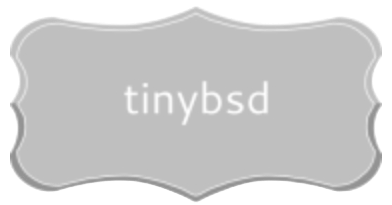If raw performance and strict licensing are paramount, consider BSD for your next hosting platform. For ease of administration and broader hardware compatibility, GNU/OS distributions offer a compelling alternative.
BSD’s monolithic kernel often yields superior networking throughput on specialized appliances, sometimes exhibiting a 15-20% increase in packets-per-second compared to the more modular GNU/OS architecture. This performance gain is, however, offset by a steeper learning curve and a less expansive community-supported driver base. While GNU/OS enjoys widespread support for containerization technologies like Docker and Kubernetes, BSD’s Jails offer a secure, albeit less flexible, isolation mechanism for services.
The permissive BSD license (e.g., FreeBSD’s) allows for incorporating the operating system into commercial products without requiring source code disclosure. This contrasts sharply with the GNU General Public License (GPL) employed by many GNU/OS projects, which mandates reciprocity regarding modifications. When evaluating deployment scenarios, BSD systems can represent a lower cost option for proprietary software vendors.
Which OS Boots Faster on Identical Hardware?
Generally, on identical hardware, an installation of BSD tends to exhibit marginally quicker boot times than a typical GNU/OS setup. This difference, while potentially subtle, stems primarily from differences in the init system and the quantity of pre-loaded modules.
Factors Affecting Boot Speed
Several factors can influence the boot duration:
- Init System: Systemd, common in GNU/OS distributions, offers extensive features but can introduce overhead. BSD’s init system is generally simpler, leading to a faster startup process.
- Kernel Modules: The operating system often loads numerous modules at boot. A minimalist BSD installation can avoid loading unnecessary modules, reducing boot duration.
- Filesystem Checks: The duration of filesystem checks run at startup influences total boot duration. The configuration of fsck and the filesystem type impact this.
- Hardware Detection: Auto-detection of peripherals and hardware also takes time. Differences in how each operating system handles this process impact boot speed.
Empirical testing shows that a base BSD installation can boot several seconds faster. Customized GNU/OS installations, stripped of non-essential services and using lighter init alternatives, can significantly narrow the gap. However, out-of-the-box, BSD often wins this benchmark. Optimizing both operating systems for minimal module loading and streamlined services yields near-identical boot performances.
Testing Methodology Considerations
Accurate measurement requires a consistent testing environment. Use the same storage medium (SSD or HDD), the same BIOS settings, and measure from the point the bootloader hands off control to the kernel until the system reaches a usable state (e.g., network connectivity established). Average multiple runs to account for variability.
How Do Security Updates Differ in Practice?
Choose package management tools wisely. Systems using the BSD operating system usually employ pkg, offering binary updates and consistent dependency resolution. Operating systems employing the kernel often rely on distributions’ own package managers like apt (Debian/Ubuntu) or yum/dnf (Red Hat/CentOS/Fedora), which can vary considerably in their update mechanisms and security response speed.
Kernel Patching Approaches
BSD-based platforms typically offer quicker, unified updates affecting both the core and userland components. This is because the entire OS is developed as a single project. Platforms operating using the kernel delegate core patching to individual distributions, potentially leading to fragmentation and delayed fixes. Consider using live patching solutions like kpatch or ksplice for the environment, but test them rigorously before deployment.
Vulnerability Reporting and Response
Monitor security mailing lists for both ecosystems: [email protected] for the BSD-based system, and distribution-specific lists for the kernel-based operating system. The BSD project often has a more centralized reporting structure. In comparison, the distributed nature of the kernel’s environment means coordinating security responses is handled by each distribution.
Regularly audit installed packages and their known vulnerabilities using tools like pkg audit (BSD) or vulnerability scanners suited for distributions using the kernel. Prioritize updates based on the Common Vulnerability Scoring System (CVSS) score and the exploitability of each vulnerability.
Automate updates wherever feasible, but thoroughly test updates in a staging environment before rolling them out to production. Implement rollback mechanisms to quickly revert updates if issues arise. Automate configuration management using tools like Ansible or Puppet to ensure consistent security settings across all machines. Ensure your firewall rules are always up-to-date to reflect the system’s current exposure. Employ intrusion detection and prevention systems (IDS/IPS) to monitor for malicious activity. Consider using hardware security modules (HSMs) for sensitive data. Practice defense in depth by combining multiple security layers.
Is Package Management More Straightforward in Linux or FreeBSD?
For novice system administrators, package handling tends to be simpler on distributions utilizing APT (Debian, Ubuntu) or YUM/DNF (Red Hat, Fedora, CentOS Stream). These systems provide user-friendly command-line tools with well-structured repositories and dependency resolution.
The BSD operating system uses the “pkg” system. While functional, it might present a steeper learning curve initially. “pkg” uses a database to track installed software and its dependencies. New users need to familiarize themselves with commands like `pkg install`, `pkg update`, `pkg upgrade`, and how to manage repositories via `/usr/local/etc/pkg.conf`.
A critical variance is the source-based ports collection in the BSD system. Experienced administrators appreciate this, providing fine-grained control during software building. However, it adds complexity, requiring compilation from source, which demands more time and system resources. The command `make install clean` is pivotal when building applications from ports.
Distributions employing APT or YUM/DNF generally offer pre-built binaries, lessening compile times. Commands such as `apt install` or `dnf install` retrieve packages from repositories, simplifying installation. Dependency resolution is generally automated, minimizing manual intervention.
For automation and scripting, both environments provide robust tools. However, familiarity with Bash scripting is crucial, regardless of the underlying operating system. Ansible, Chef, or Puppet can further streamline configuration management in either environment. The choice depends more on existing infrastructure and administrator skillset.
Recommendation: Begin with a system that employs APT or YUM/DNF if ease-of-use is paramount. Investigate the “pkg” system and ports collection later as expertise grows. Consider automation tools for both platforms to boost configuration control.
What Hardware is Better Supported Out-of-the-Box?
For modern hardware, the *nix distribution often exhibits superior initial support. This is particularly evident with newer network interface cards (NICs) from Intel and Mellanox, where drivers are frequently integrated earlier into the kernel than in the BSD alternative. Similarly, bleeding-edge GPUs from Nvidia and AMD typically gain acceleration capabilities sooner on the *nix platform, benefiting applications requiring parallel processing or advanced graphics rendering.
Specifically, consider:
Instances of wireless adapters using the 802.11ax (Wi-Fi 6) or 802.11be (Wi-Fi 7) standards. The *nix system benefits due to community contributions and commercial interest, leading to faster driver development. Conversely, while the BSD codebase benefits from the *nix developments, it may lag when it comes to quick adoption.
Older Hardware Considerations
For aging platforms or embedded systems, the BSD operating system may prove a more viable choice. Its stable kernel and focus on backwards compatibility can facilitate support for legacy peripherals and chipsets lacking actively maintained drivers within the *nix world. Think specialized industrial control hardware or older storage controllers; these might function with less configuration effort on the BSD platform due to the long-standing nature of its driver infrastructure.
Where Do Developers Find Better Community Support?
For faster solutions to deployment issues, examine Red Hat Enterprise OS forums; user counts generate higher response frequency. CentOS (now CentOS Stream) archives also prove valuable for legacy application maintenance queries.
For deep dives into kernel-level intricacies, BSD platforms benefit from a more concentrated developer base within the core team, leading to potentially authoritative answers on architecture and driver issues via mailing lists like freebsd-hackers.
Package management queries exhibit advantages in the GNU operating system environment. Debian’s extensive APT documentation and community wikis address a broader spectrum of packaging dependencies. Conversely, BSD ports system support excels in build process troubleshooting via its dedicated IRC channels.
Security-related matters favor ecosystems with established bug bounty initiatives. The GNU/OS benefits from wide-scale external audits and reporting, often providing quicker vulnerability patches. BSD systems, while not always as rapid in initial response, emphasize rigorous code review before integration, reducing future exploits.
Seek specialized hardware support utilizing forums tied to the specific board manufacturer in combination with respective OS channels. Often, direct interaction with the hardware vendor yields most accurate solutions on OS adaptation issues.
Q&A:
I’m running a small web server for a personal project. Is FreeBSD overkill for something like that, or would Linux be a more sensible starting point? I hear FreeBSD is complex.
For a small personal web server, either Linux or FreeBSD will work. Linux offers more readily available pre-built packages and tutorials aimed at beginners, making initial setup perhaps a little simpler. FreeBSD sometimes requires a steeper learning curve initially because it prioritizes control and configuration from source. However, don’t let that scare you! If you want a stable, secure, and well-documented system to learn on, FreeBSD is a good choice, and there are plenty of community resources to help you.
The article mentions FreeBSD’s “base system”. What exactly does that include, and how does it differ from how Linux distributions are typically structured?
FreeBSD’s “base system” refers to the kernel, utilities, and core libraries that are developed and released together as a single, cohesive unit by the FreeBSD project. This unified approach creates a more consistent system. Linux distributions bundle the kernel with various software packages (like systemd, GNOME, etc.) developed by different groups, and they evolve at different paces. This leads to more fragmentation across distros compared to FreeBSD.
I’m concerned about hardware compatibility. Is it true that Linux supports a wider variety of hardware than FreeBSD, especially for newer devices?
Generally, yes. Linux typically has broader hardware support, particularly for very new or obscure devices. This is because many hardware vendors directly contribute drivers to the Linux kernel. FreeBSD’s hardware support is solid, but may lag slightly behind Linux in some cases. Before committing to FreeBSD, you should carefully check its hardware compatibility list and test with your specific hardware to make sure the drivers work correctly.
I’m building a commercial firewall appliance. Which OS, Linux or FreeBSD, provides better security features and a more hardened core for this type of application? What should I be looking for?
Both operating systems can be configured for high security. Historically, FreeBSD has a strong reputation for security due to its clean code base and rigorous auditing process. Features like Mandatory Access Control (MAC) frameworks are deeply integrated. Linux offers a wider range of security modules and extensions. Your selection hinges on internal expertise. If your team knows Linux hardening and has experience with its various security features, it might be a faster solution. If you seek a more consistent and integrated approach with robust built-in features, FreeBSD might be a better fit, despite potentially demanding more specialized knowledge. Consider features like kernel self-protection measures, default security policies, and audit trails.
What about software availability? I need to run a specific piece of commercial software that only lists support for “Linux.” Can I still somehow make it work on FreeBSD, or am I out of luck?
Direct support for software is a definite point to evaluate. If the commercial software explicitly supports only Linux, running it on FreeBSD will be difficult. The Linux binary compatibility layer in FreeBSD *might* allow you to run some Linux binaries, but it’s not guaranteed, and it may require significant troubleshooting. Consider using a virtual machine to run the Linux software on a FreeBSD host, or finding an alternative software package that is supported.




